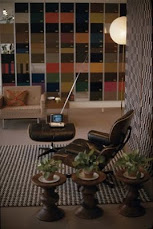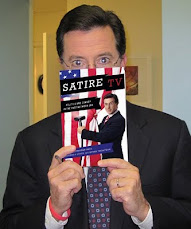[The following is the expanded version of my response for the sitcom panel at the upcoming Flow Conference at UT Austin.]
Here, and moving forward, I want to think about what sitcoms can do to make comedy on television more responsive to our desperate need at the moment for more informed social dialogue. I want us to re-embrace the notion of TV as a cultural forum, and in particular, the role of the sitcom in that forum. I’d like to get away from focusing on stylistic or structural differences in sitcoms, or even their current trends of self-reflexivity and instead focus (or re-focus) on what are the enduring pleasures of the sitcom, and considering how those pleasures might hold promise for articulating and negotiating cultural conflict. Maybe, as the title of an upcoming Flow Conference panel I will be on suggests, “The Sitcoms Have Become Self-Aware.” But it’s what makes the shows “sitcoms” and not what makes them “self-aware” that I’m interested in.
Despite persistent rumors of its demise, there is clearly a continued taste for the sitcom. Nostalgia abounds for the old-fashioned, multicamera sitcom among journalist-critics (evident in the “sitcom is dead” rhetoric) and sitcom writer-producers such as Bill Lawrence (who made a multicamera episode of Scrubs as an homage to the format) and in the creation of shows like Comedy Central’s Big Lake, which appears to be attempting to force the ironic, self-reflexive trend in TV comedy into the multicamera, live audience format. (Similar attempts have been made before with Lucky Louie and That’s My Bush…I’m sure we can think of others.)
There is also evidence for audience taste for traditional sitcom pleasures. On the one hand, there is the continued success of sitcoms that academic and journalist-critics shun, but which Nielsen ratings suggest audiences love, such as How I Met Your Mother and Two and a Half Men. Then there is the very fact that critics are so vocal about shunning these shows and wishing there were “better” sitcoms more suited to their tastes and nostalgia. Sitcom nostalgia extends to general TV audiences as well. Besides the strip programming of syndicated sitcoms such as those just mentioned, and relics like The Fresh Prince of Bel-Air, I am recognizing among my students a growing trend of binging on DVDs of 1980s and 1990s sitcoms such as The Facts of Life and Full House, and brandishing knowledge of those texts and the ways in which they dealt with conflict as hip cultural capital. Maybe LOST will enjoy a longer life of binge viewing, but my students stare blankly at me when I talk about doing so with 24. Having done so with The Facts of Life, however, brings approving ooohs and aaahs.
Personally, my own sitcom nostalgia has got me watching episode after episode of The Bob Newhart Show and The Mary Tyler Moore Show on Hulu. I have to admit that it’s sort of like what Mad Men does for me in drama: the production design (really the fashion and décor) provides me the necessary aesthetic distance with which I can enjoy all manner of self-destruction and over-indulgence. Without it, I might as well watch that douchebag Scott on Kourtney and Khloe Take Miami. Watching those early 1970s shows is similar. They are so awesomely dated in their fashion and reliance upon the proscenium that I can enjoy the popular pleasures of complication and resolution the traditional sitcom so efficiently provides.
Another sign of continued relevance of the sitcom is the breakout success of Modern Family, which adopts the comedy verite style to produce a narrative structure and visual style that seems about equal parts Arrested Development and When Harry Met Sally. I have argued before that rather than speaking of “mockumentary” style sitcoms, we ought to call them “comedy verite” because a number of these shows never directly address the camera (Arrested Development, Curb Your Enthusiasm) or suggest an actual documentary/reality crew presence aside from direct testimony (Parks and Recreation, Modern Family). In short, I think the style is prevalent enough that we ought to acknowledge its presence alongside single and multicamera as a mode of production because it’s really neither. (See my essay, Velvet Light Trap, Number 60, Fall 2007. And btw, Brett Mills called it that before me, focusing on performances in recent British sitcoms.)
We can look at a show like Modern Family to see what the format allows a sitcom to do aside from the traditional complication, confusion, alleviation structure. Besides the annoyingly exaggerated handheld camera, Modern Family uses the verite format to produce humor that deviates from linear narrative in ways conducive to more aggressively articulating cultural critique. The couch segments, in which individual characters or couples speak to the camera about their familial experiences, provide opportunities to cutaway to past comic episodes, at the same time they reiterate the persistence of the family, since they suggest that outside the immediate episode, the family persists, prevails, and can be positively reflected upon in order to teach us something.
Besides these specific segments, the verite design of the program suggests it has been rapidly edited, which in turn encourages the sort of non sequitur jokes and ironic moments we’ve become accustomed to in other kinds of comic programming. One other benefit of fitting traditional sitcom-style jokes into the verite format is that when something is said it doesn’t have to succeed at being funny, because there is no audience to respond with laughter, or no laugh track to suggest that an audience would have. A line doesn’t have to succeed at being funny; it can just be ironic, or poignant, or just a line.
Recognizing how nicely Modern Family fits the typical complication/confusion/alleviation (through family) model of the domestic sitcom described by Newcomb should help us recognize that the characters are characters again in the model of the domestic sitcom who fill specific familial roles and whom audiences can empathize with, rather than discursive figures who critique cultural stereotypes. While some have suggested that the show satirizes both modern families and sitcom constructions of families, I don’t see this at all. For example, the fact that the more “flamboyant-gay” character, Cameron, was once a college football player doesn’t undermine homophobic stereotypes; it throws his “gayness” in greater comic relief, allows him to identify with his partner Mitchell’s father more, and further highlights Mitchell’s failures at traditional masculinity. In short, even Cameron loves football! And isn’t that funny! I cringe during most scenes with Gloria; she seems employed as both a fiery Latina stereotype and an only slightly less emasculating Peg to Ed O’Neill’s Jay/Al Bundy.
Watch an episode of Modern Family and imagine how easily it could be transformed into a “filmed before a live studio-audience” sitcom with only the addition of some sound effects. Better yet, watch this clip where I have done it for you.
I don’t, however, simply wish to dismiss Modern Family as a regressive sitcom. Rather, I want to cite its popularity and success as evidence that sitcoms can, and should, do more to serve as a cultural forum. Bottom line: sitcoms can serve as the cultural forums we need aside from Fox and Friends, The View, Alex Jones, Glenn Beck—and aside from The Daily Show, Colbert Report, and yes, South Park, too. I’ll let someone else theorize about how dramas do or do not successfully deal with complicated social issues. I’m a comedy person, and so I look to comedy to be more innovative because I think it is ultimately the more successful forum for cultural dialogue. But I do think that there is something especially powerful about narrative, and about characters that viewers can empathize with, and this is why Jon Stewart, Colbert, or even a new Dave Chappelle isn’t enough. (Hell, while we’re at it, how about a new Richard Pryor?)
Given continued popularity of sitcoms, the abundance of “sitcom nostalgia,” and the embrace of the neo-traditional domestic sitcom Modern Family, I think it’s time to 1) reiterate how we define the sitcom by describing its narrative structure in ways that accommodate recent innovations in modes of production, performance, and visual style and 2) consider how that narrative structure can take advantage of such innovations to more aggressively mediate culture, articulating controversy more routinely, if less narratively framed, than it has in the past.
The latest edition of Newcomb’s TV: The Critical View doesn’t include the cultural forum essay, but I believe that the continued show of love for the sitcom, nostalgic and otherwise, suggests that the ritual of TV watching is still important, regardless whether it is done online, on-demand, time- and format-shifted, etc., and that the sitcom still holds a privileged place in television culture. Here is my recurring anecdotal evidence for this: if I casually talk about sitcoms with non-academic acquaintances, I don’t receive the immediate and obligatory revulsion that I get when talking about reality TV. (Mind you, if I talk about specific reality programs, I’m less likely to get that reaction.) General reaction: Reality = Uhg; Sitcom = Ahh.
What I do hope we can abandon from the critically-informed past is the notion that the sitcom is an essentially conservative format. The cultural forum argument ought to have pushed us past that—it’s more important what is discussed than how things end, or how we feel about the theatrical characters saying things. What I want to think about is how the sitcom format could now be pushed (thanks to narrowcasting, pay cable, YouTube, et al.) to articulate pressing political issues in a way that counters the likes of Glenn Beck and Sarah Palin. Those two pop culture creations have been granted powers to “connect the dots” between real public discontent and alienation with conspiracies and right-wing flights of fancy less bounded by rationality than the most outlandish fantastic sitcom from the 1960s.
Is it unreasonable to ask a sitcom (particularly one that purports to be “modern”) to do better in 22 minutes? Given the damage that Glenn Beck can do in two, I don’t think so.














